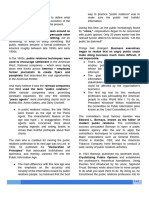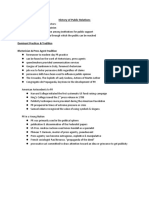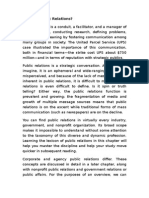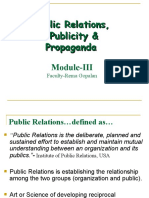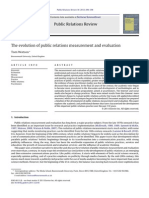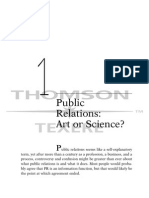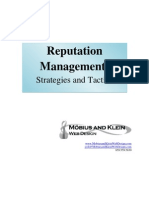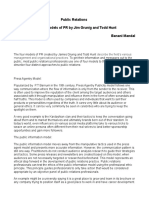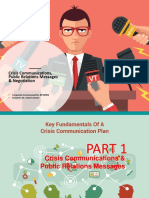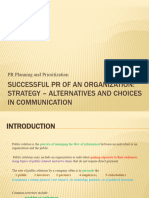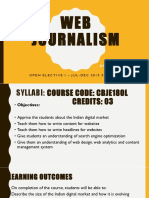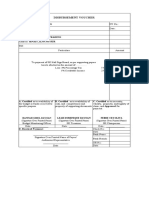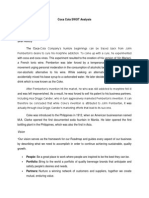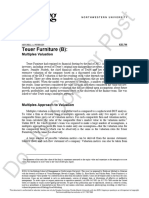0% found this document useful (0 votes)
209 views47 pagesDigital PR: Evolution and Impact
Digital public relations (PR) involves using online platforms and digital media to promote organizations and manage their reputation. With the rise of the internet and new communication technologies, the PR industry has evolved significantly. Digital PR allows PR practitioners to target specific audiences and disseminate information more quickly through various online channels like websites, blogs, social media and search engines. It is a more versatile, effective and affordable approach than traditional PR methods. However, digital PR still requires strategic communication and building relationships online to gain media exposure and influence target audiences.
Uploaded by
lushomoCopyright
© © All Rights Reserved
We take content rights seriously. If you suspect this is your content, claim it here.
Available Formats
Download as PDF, TXT or read online on Scribd
0% found this document useful (0 votes)
209 views47 pagesDigital PR: Evolution and Impact
Digital public relations (PR) involves using online platforms and digital media to promote organizations and manage their reputation. With the rise of the internet and new communication technologies, the PR industry has evolved significantly. Digital PR allows PR practitioners to target specific audiences and disseminate information more quickly through various online channels like websites, blogs, social media and search engines. It is a more versatile, effective and affordable approach than traditional PR methods. However, digital PR still requires strategic communication and building relationships online to gain media exposure and influence target audiences.
Uploaded by
lushomoCopyright
© © All Rights Reserved
We take content rights seriously. If you suspect this is your content, claim it here.
Available Formats
Download as PDF, TXT or read online on Scribd
/ 47



